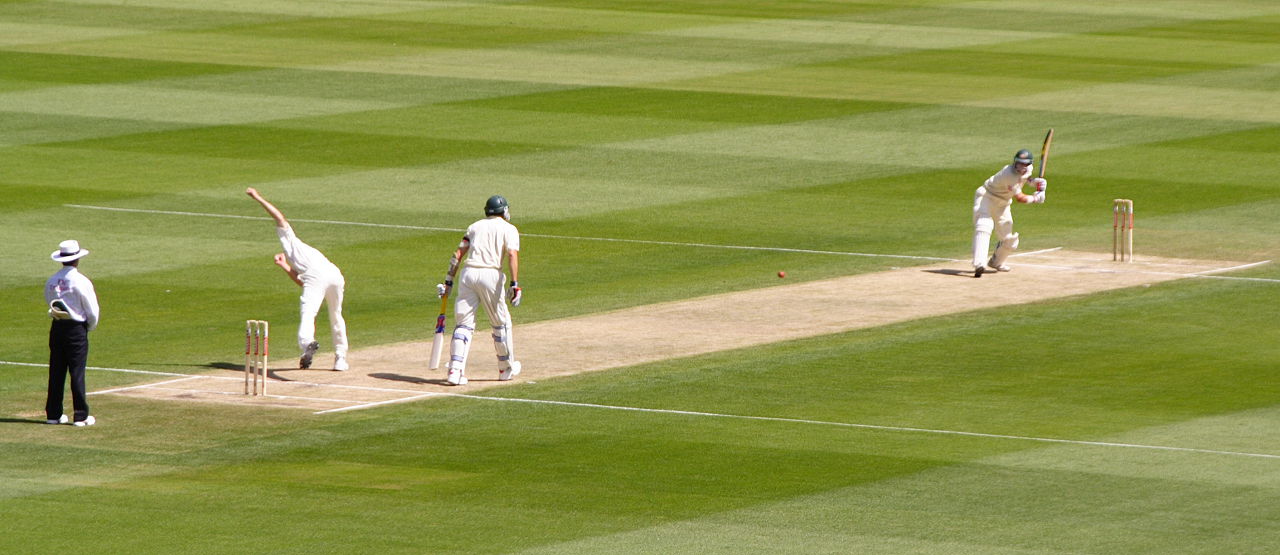
As the 1st test is underway between Australia and New Zealand at the Gabba, British Medical Journal Injury Prevention brings you an interview with Dr Naj Soomro, a physician with a passion for Technology and Sports Medicine in Cricket. I met Dr Soomro at the National Conference of Sports Medicine Australia last month where I was representing the University of New South Wales Sports Medicine Society, and his presentation was one of my personal highlights of the conference! He presented on a novel Injury Surveillance, Prevention and Prediction App, “Cricket Predict”.
Dr Soomro kindly agreed to answer a few questions for the blog!
Q1. Tell us about Cricket Predict; what is it and how did you come up with the concept?
I’ve been interested in prediction for a long time now. Today, we use technology and science to predict everything from the weather to cardiovascular risk. This carries into Sport as well: If you have a look at NFL, previous injury is used extensively in determining injury risk; Rugby players are similarly triaged using GPS data and the number of tackles per game. My aim was to develop a similar system for Cricket.
Cricket predict is a mobile app that harnesses technology in the surveillance of injuries, measures risk factors for injury and ultimately, aims to predict (and prevent!) injury. By tracking risk factors for injury in real-time, medical and coaching staff can receive alerts when an individual player’s risk profile is high – and interventions can be implemented. Further, whenever a player is injured, there is an electronic injury form which can be filled out through the app that goes onto a central online database, helping with identification of injuries.
https://www.youtube.com/watch?v=kkOW5mv9uPM&feature=youtu.be
Q2. Cricket predict utilises a number of different risk factors to help predict injury, what is the evidence for using these risk factors specifically?
The risk factors that are used in Cricket Predict are all validated in the literature. They include:
I. Cricket workload, such as number of balls bowled
II. Non-cricket workload e.g. Strength and conditioning sessions, cross-training
III. Psychological status – measured by a modified Profile of Mood States (POMS) questionnaire, usually 76 items but modified to 10 items to be cricket-specific and “player-friendly”.
IV. Sleep, a measure of fatigue and documented risk factor for injury, measured by an accelerometer and analysed by Activ Graph.
V. Previous injury profile
VI. Pre-season strength parameters, including Internal Rotation to External Rotation ratio (predicts injury in Throwing Athletes), Hamstring to Quadriceps ratio (predicts hamstring injury)
Cricket Predict’s algorithm incorporates all of these risk factors and displays to the user a graphical representation of the player’s injury risk. However, exactly how predictive these risk factors are in cricket players is yet to be studied and my research group is running a prospective validation study to do just that.
Q3. What are the implications of the findings of this study for readers?
There are 2 main implications of this research:
One of the biggest implications of my research is the integration of technology into Sports Medicine, which I see as the way forward. Its one of the reasons I developed this mobile app. Developing an electronic injury surveillance system makes data collection very easy, and numerous studies have demonstrated that electronic injury surveillance systems are superior to paper-based systems. Additionally, with the advent of wearable technology, large amounts of quantitative data can be incorporated.
Secondly, if the algorithm in Cricket Predict is validated, this research will revolutionise the way that Sportspeople play the game. Based on what we prove and validate, the coaches are going to change their coaching techniques, they will be able to select the best players for their teams, and develop policies for junior players as well.
Q4. Has this type of research been undertaken in other sports?
There is a recent article by Tim Gabbett which studied an injury prediction model in Australian Rugby League in which he was able to predict approximately 50-80% of soft-tissue non contact injuries over the course of 2 seasons. In the course of a tournament, an injury to a key player can change the balance of a team. Even if an algorithm can predict 10-20% of injuries, for an elite team that is very significant.
Q5. This research is heavily reliant on Technology, where do you see Technology and Medicine, or Technology and Injury Prevention going forward?
A lot of data that we get these days is subjective data from players, and I think the best way to quantify data and validate data is to get data electronically from the use of sensors. Sensor-based technology and imaging technology is going to go very far in terms of performance analysis and the usage of physical characteristics of players. I see the usage of wearable technology being really big in sports. What I mean by this is the use of accelerometers or gyroscopes to look at movement patterns, similar sensors to look at medical data such as the amount of perspiration, and the amount of stress hormones such as Cortisol that can be measured in saliva and also in sweat. We can also look at blood sugar levels, heart rate, oxygen saturations – all of these things can be measured using wearable technology which can send wireless information to the medical and coaching staff. One of the most important things coaches can get out of this is the amount of fatigue of their players. If we can use technology to quantify this fatigue, that is going to revolutionise sport.
If you’d like to keep this conversation going, or be involved with Cricket Predict in the future, please get in touch with Dr Najeeb Soomro via email cricdoctor@gmail.com or Twitter @CricDoctor. Specifically, if you are a cricket club, sports scientist or health professional interested in doing injury surveillance or helping to validate the app, Dr Soomro is happy to share the app with you!
Let us know what you think @BMJ_IP too!
David Bui is a final year medical student at the University of New South Wales and outgoing President of the University of New South Wales Sports Medicine Society. He has an interest in Orthopaedics, Sports Medicine and Injury – in all forms! @David_Bui_
